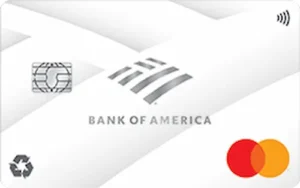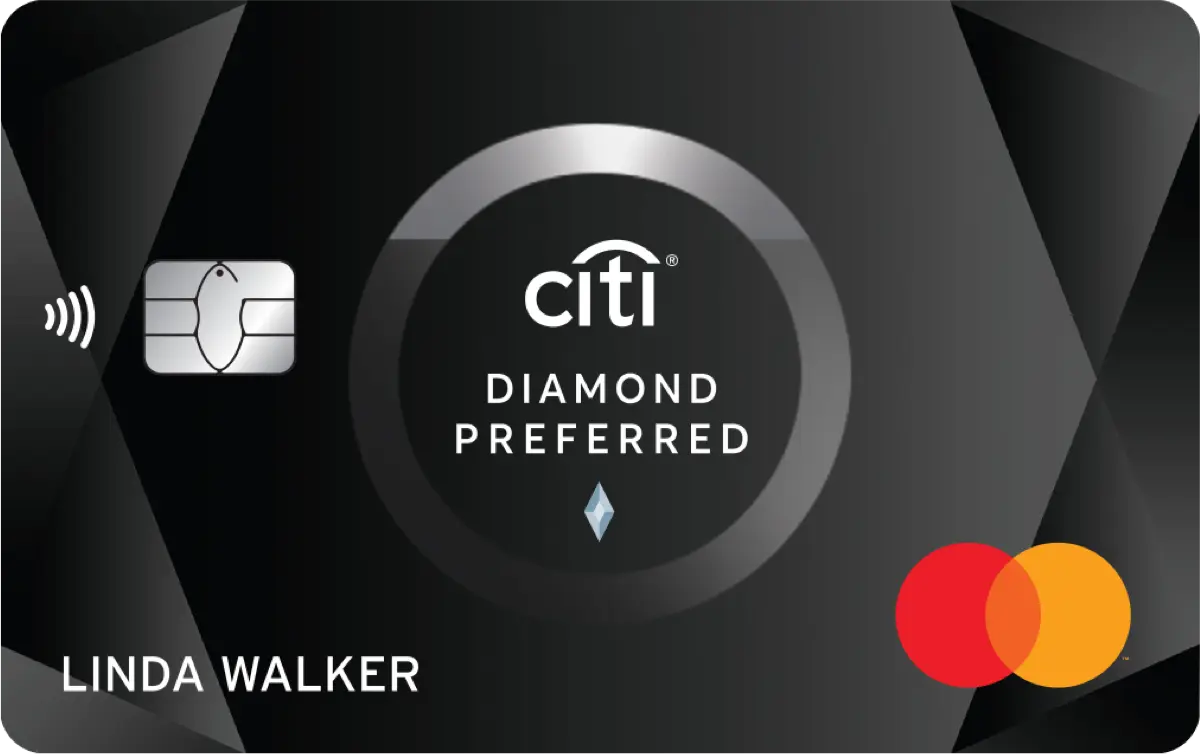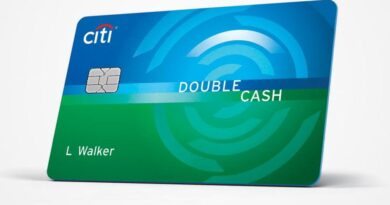The Bank Americard is a place where convenience meets innovation in banking. This cutting-edge card offers benefits and features that change the way you manage your finances. Bank Americard works well with your daily routine and makes it easy for you to manage your money.
Enjoy flexible rewards programs, strong security measures, and personalized help whenever you need it. Join us on a journey with Bank Americard to become financially empowered. The possibilities are endless and you can achieve your financial goals. Continue reading below to find out more about this card.
Bank Americard Overview
Welcome to Bank Americard, a website that makes it easy and gives you control over your money. The Bank Americard has many new features that fit your lifestyle. It’s more than just a way to pay bills. It’s your trusted partner in reaching your financial goals. Come with us and see what you can do with Bank Americard. It’s easy and rewarding to manage your money.
 Main Features:
Main Features:
- Emitting Bank: Bank of America
- Flag: Visa or Mastercard
- Coverage: Accepted worldwide
You Need to Know:
- Limit: Enjoy a flexible credit limit tailored to your financial needs and history.
- Rewards: Earn rewards on every purchase, redeemable for cashback, travel, merchandise, and more.
- Welcome Offer: Benefit from exclusive welcome bonuses upon card activation or first purchase.
- Taxes and Tariffs: Transparent fee structures with clear explanations of taxes and tariffs associated with card usage.
Know the Bank Americard
The BankAmericard is significant in the history of credit cards, marking a pivotal development in consumer finance.
Introduced in 1958 by Bank of America, it was the first successful modern credit card and the precursor to the Visa credit system.
Before the introduction of the BankAmericard, credit cards were limited in their use and acceptance, often restricted to single stores or locales and involving cumbersome processes for both customers and merchants.
The BankAmericard revolutionized this system by introducing a general-purpose credit card that could be used at a variety of merchants and across geographical boundaries.
This innovation led to the widespread adoption of credit cards as a convenient means of payment.
The card’s system allowed for a revolving credit model, where users could carry a balance from month to month, paying interest on the unpaid portion, which was a relatively new concept at the time.
The program initially faced challenges, including financial losses and issues with fraud, as cards were mass-mailed to customers without prior consent.
However, over time, these issues were addressed, and the program became immensely successful, laying the groundwork for the modern credit card industry.
In 1970, Bank of America gave up direct control of the BankAmericard program, leading to the creation of Visa in 1976.
The Visa system expanded upon the BankAmericard model, becoming a global payment system that operates to this day.
The transformation from BankAmericard to Visa illustrates the evolution of credit cards from a novel financial product to an essential component of global commerce.
Pro and Cons
The BankAmericard, as an early predecessor to the Visa credit card system, introduced several innovations and practices that have shaped the credit card industry.
Here’s a look at the pros and cons associated with its introduction and early implementation:
Pioneered the Revolving Credit System: It introduced the concept of revolving credit to the masses, allowing consumers to carry a balance from one month to the next, which was revolutionary at the time.
Wide Acceptance: By creating a general-purpose credit card, BankAmericard paved the way for consumers to make purchases at a variety of merchants, not just at single stores or within limited networks.
Boost to Consumer Spending: The ease of use and access to credit led to an increase in consumer spending, benefiting the economy and helping businesses grow by extending their customer base.
Foundation for Modern Credit Systems: BankAmericard created a model for credit cards that became the Visa system, which is now used all over the world.
Debt Accumulation: Revolving credit made it easier for consumers to accumulate debt, which sometimes led to financial distress for people who couldn’t manage their borrowing well.
Security and Fraud Issues: The initial rollout of the BankAmericard included mass mailing of cards to consumers, which led to significant issues with fraud and theft.
Financial Instability for Issuers: TIn the early years of the BankAmericard program, Bank of America lost a lot of money because people thought that fraud and credit losses were small.
Consumer Privacy Concerns: The practice of unsolicited credit card mailings raised concerns about privacy and the ethics of pushing credit onto consumers without their prior consent.
Increased Consumerism: Critics argue that the widespread availability of credit cards like BankAmericard contributed to a culture of consumerism, encouraging spending beyond means and valuing consumption over saving.
Is Bank Americard worth it?
Absolutely, the Bank Americard is worth considering for several compelling reasons.
Firstly, it offers an array of perks and rewards tailored to suit various lifestyles.
Whether you’re a frequent traveler, a savvy shopper, or someone who prioritizes cashback, the Bank Americard provides enticing incentives that make every purchase more rewarding.
Moreover, the Bank Americard stands out for its user-friendly interface and innovative features, making managing your finances a breeze.
From intuitive mobile banking apps to seamless integration with digital wallets, the card ensures a smooth and hassle-free experience for users.
Additionally, Bank America’s robust security measures provide peace of mind, safeguarding your transactions against potential threats.
With proactive fraud monitoring and zero-liability protection, you can trust that your financial information is in safe hands.
In summary, the Bank Americard not only offers attractive rewards and benefits but also prioritizes convenience and security, making it a worthy addition to your wallet.
Details of advantages and disadvantages
Let’s delve into the advantages and disadvantages to help you make an informed decision:
Generous Rewards Programs: Bank Americard often offers competitive rewards programs, including cashback on purchases, travel rewards, and bonus points for specific spending categories. These rewards can add up quickly, providing tangible benefits for cardholders.
Introductory Offers: Many Bank Americard products come with enticing introductory offers, such as a period of 0% APR on purchases or balance transfers. This feature can be particularly beneficial for those looking to make large purchases or consolidate existing credit card debt.
Wide Acceptance: Being issued by Bank America, one of the largest financial institutions in the United States, Bank Americard enjoys widespread acceptance both domestically and internationally. This makes it a convenient payment option for various transactions.
Online and Mobile Banking: Bank America offers robust online and mobile banking platforms, allowing cardholders to manage their accounts, track spending, and make payments conveniently from their smartphones or computers.
Annual Fees: Some Bank Americard products may come with annual fees, which can detract from the overall value proposition, especially for individuals who do not utilize the card’s benefits enough to offset these fees.
High APR: While introductory offers may provide temporary relief, the ongoing APR for Bank Americard products can be relatively high. Carrying a balance on the card can result in significant interest charges over time.
Foreign Transaction Fees: For international travelers, Bank Americard’s foreign transaction fees can add up quickly. These fees typically range from 3% to 5% of each transaction made in a foreign currency, making the card less attractive for use abroad.
Penalty Fees and APR: Late payment fees and penalty APRs can be steep with Bank Americard, potentially leading to financial strain for cardholders who miss payments or exceed their credit limits.
How to order Bank Americard card
Ordering a Bank Americard is a straightforward process that can typically be completed online or by phone. Here’s a general guide on how to order a Bank Americard:
Visit the Bank of America Website: Start by visiting the official website of Bank of America. Navigate to the section dedicated to credit cards or specifically to Bank Americard offerings.
Explore Card Options: Take some time to explore the various Bank Americard options available. Consider factors such as rewards programs, annual fees, APR, and any introductory offers that may be applicable.
Select Your Card: Once you’ve identified the Bank Americard that best suits your needs, click on the “Apply Now” or similar button associated with that card.
Fill Out the Application: You’ll be directed to an online application form. Fill out all required information accurately, including personal details, contact information, employment status, income, and any other details requested.
Submit Your Application: Review the information you’ve provided for accuracy, then submit your application electronically. Some cards may provide instant approval, while others may require further review.
Wait for Approval: If your application is approved, you’ll receive confirmation from Bank of America. Your Bank Americard will typically be mailed to you within a few business days to the address you provided during the application process.
Alternatively, if you prefer to apply by phone or have any questions during the application process, you can contact Bank of America’s customer service. They’ll guide you through the application and can assist with any inquiries you may have.
How Bank Americard compares to other cards
Comparing the Bank Americad credit card to other credit cards involves evaluating various factors such as interest rates, fees, rewards programs, and additional benefits.
Here’s a general comparison of the BankAmericard with some other popular credit cards:
BankAmericard vs. Citi Simplicity Card
| BankAmericard |
Citi Simplicity Card |
| Introductory APR: Typically offers a promotional APR on balance transfers for a specified period, often ranging from 12 to 18 months. |
Introductory APR: Often offers a promotional APR on balance transfers for a specified period, typically ranging from 12 to 21 months. |
| Balance Transfer Fees: May have a balance transfer fee, typically around 3% to 5% of the transferred amount. |
Balance Transfer Fees: Usually charges a balance transfer fee, typically around 3% to 5% of the transferred amount. |
| Ongoing APR: After the introductory period ends, the APR on remaining balances will revert to the regular APR, which can vary based on creditworthiness. |
Ongoing APR: After the promotional period, the APR on remaining balances will revert to the regular APR, which can vary based on creditworthiness. |
| Rewards: May offer rewards or cash back programs for purchases made with the card but may not offer specific rewards for balance transfers. |
Rewards: Typically, the Citi Simplicity Card does not offer rewards or cash back programs. |
| Additional Benefits: May offer additional perks such as fraud protection, access to credit scores, and optional overdraft protection. |
Additional Benefits: Citi Simplicity Card is known for its simplicity, offering features like no late fees, no penalty APR, and no annual fee. |
BankAmericard vs. Discover it Balance Transfer
| BankAmericard |
Discover it |
| Introductory APR: Typically offers a promotional APR on balance transfers for a specified period, often ranging from 12 to 18 months. |
Introductory APR: Also typically offers a promotional APR on balance transfers for a specified period, often ranging from 12 to 18 months, with potential for 0% APR. |
| Balance Transfer Fees: May have a balance transfer fee, typically around 3% to 5% of the transferred amount. |
Balance Transfer Fees: Usually charges a balance transfer fee, typically around 3% to 5% of the transferred amount. |
| Ongoing APR: After the introductory period ends, the APR on remaining balances will revert to the regular APR, which can vary based on creditworthiness. |
Ongoing APR: After the promotional period, the APR on remaining balances will revert to the regular APR, which can vary based on creditworthiness. |
| Rewards: May offer rewards or cash back programs for purchases made with the card but may not offer specific rewards for balance transfers. |
Rewards: Known for its cash back rewards program, offering cash back on purchases made with the card. They may also have special rotating categories with higher cash back rates. |
| Additional Benefits: May offer additional perks such as fraud protection, access to credit scores, and optional overdraft protection. |
Additional Benefits: Often provides additional benefits such as free FICO credit score tracking, fraud protection, and various cardholder perks. |
Who is Bank Americard right for?
- The BankAmericard might be a good fit for individuals who;
- Want to transfer existing credit card balances;
- Prefer a card with a straightforward balance transfer offer;
- Are existing Bank of America customers;
- Value additional perks and benefits;
- Have a good credit score.
In conclusion, Bank americard program is the pinnacle of personalized banking excellence.
Tailored for high-net-worth individuals who crave more than just standard banking services, it offers a world of exclusive benefits and VIP treatment.
Whether you’re seeking personalized financial guidance, exclusive perks, or priority support, it delivers an unparalleled banking experience designed to elevate your financial journey to new heights.
Say goodbyve to ordinary banking and hello to a world where your financial dreams become reality with Bank Americard.
Join us and discover the true meaning of exceptional banking.
 Main Features:
Main Features:

